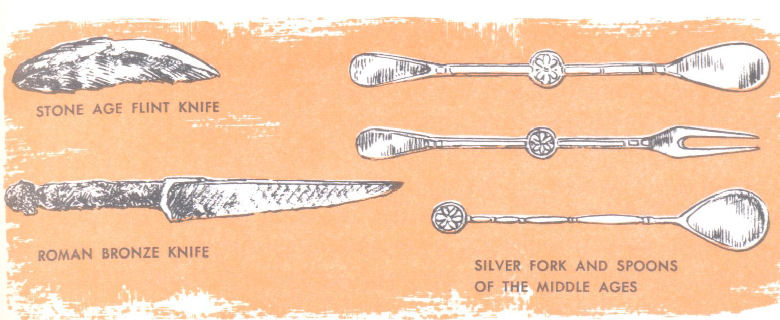306.HOW DID FRUITS AND VEGETABLES GET THEIR NAMES?
The name of everything we come in contact with has an origin, and sometimes it’s quite surprising to discover how certain names began. Take a name like gooseberry, for example. It has nothing to do with geese! It was originally gorseberry. In Saxon, gorst from which “gorse” is derived, meant “rough.” And this berry has this name because it grows on a rough or thorny shrub! Raspberry comes from the German verb raspen, which means to rub together or rub as with a file. The marks on this berry were thought to resemble a file.
305.HOW DID EATING UTENSILS ORIGINATE?
The way man eats is considered one of the signs of his civilization. And since very earliest times man has created various utensils to make his eating habits more civilized.
Some kind of spoon-like implement, for example, probably existed back in the Stone Age. We know that thousands of years ago spoons of wood, stone, and ivory were used by the Egyptians. The Greeks and Romans used spoons of bronze and silver, and some of them were the products of master craftsmen and very beautiful. During the Middle Ages spoons were made of bone, wood, and tin, while the wealthy had elaborate spoons of beaten silver.
304.HOW DID COOKING BEGIN?
Today cooking is quite an art. There are great chefs, famous restaurants, thousands and thousands of cookbooks, and millions of people who pride themselves on being able to cook well.
Yet there was a time when man didn’t even cook his food. The early cave man ate his food raw. Even after fire was discovered, the only kind of cooking that took place was to throw the carcass of an animal on the burning embers.




